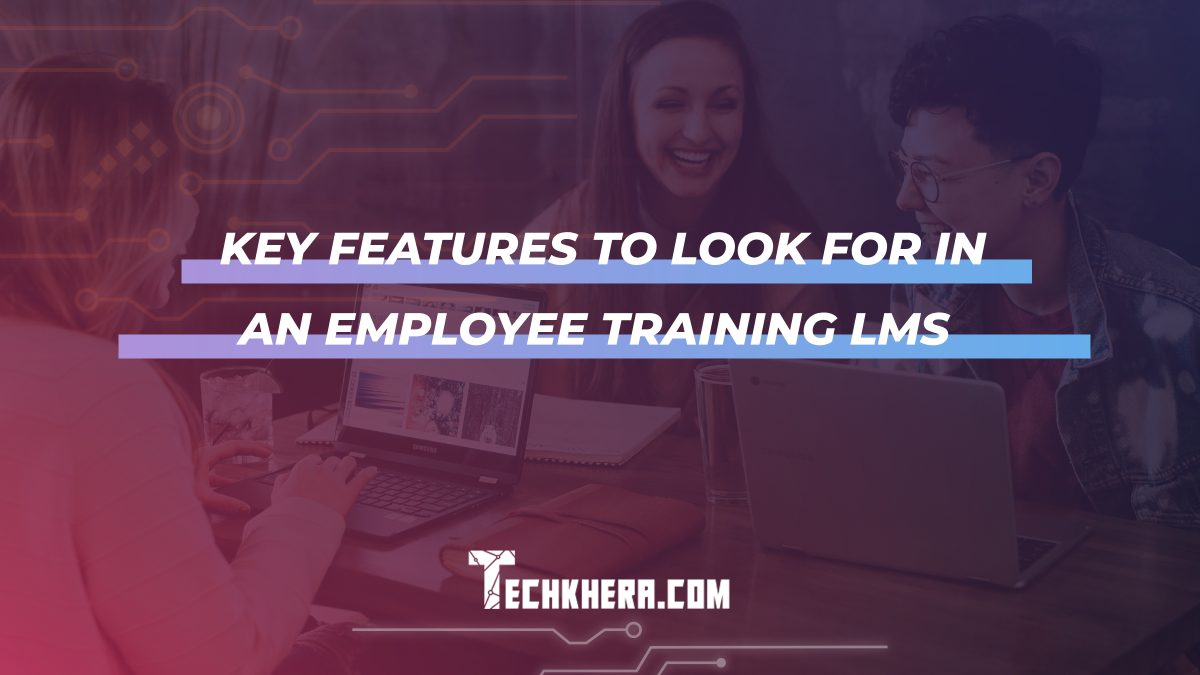
Key Features to Look for in an Employee Training LMS
In the rapidly evolving business landscape, the significance of employee training cannot be overstated. It is a pivotal element for organizational growth and employee development. Besides its significant importance, according to statistics, 59% of employees report no formal workplace training.
Central to this training is the use of a learning management system (LMS), a digital platform that facilitates the delivery, tracking, and management of training programs. Selecting the right LMS is crucial, as it directly impacts the effectiveness of your training initiatives.
In this post, we’ll delve into the key features to consider when choosing an LMS for employee training.

Contents
- 1 User-Friendly Interface
- 2 Customization and Flexibility
- 3 Comprehensive Course Management
- 4 Scalability
- 5 Mobile Accessibility
- 6 Tracking and Reporting Capabilities
- 7 Integration Capabilities
- 8 Support and Training for Administrators and Users
- 9 Security and Data Protection
- 10 Feedback and Assessment Tools
- 11 Final Thoughts
User-Friendly Interface
An LMS should be intuitive and straightforward to navigate. A user-friendly interface is not just about aesthetics; it’s about reducing the learning curve for your employees. When an LMS for employee training is easy to use, it encourages learners to engage more with the content.
This increased engagement leads to better retention of the training material, making the entire learning process more efficient and enjoyable. Think of an LMS that allows users to find what they need without unnecessary clicks or confusion; a system that feels familiar from the first login.
Customization and Flexibility
Every organization has unique training needs and branding guidelines. Hence, an LMS must offer robust customization and flexibility. This feature allows you to mold the system to reflect your organization’s ethos and meet specific training requirements.
Customization can range from simple branding adjustments, like logos and color schemes, to more complex modifications like creating bespoke learning paths. The ability to personalize your LMS ensures that the training feels relevant and aligned with your organizational culture.
Comprehensive Course Management
At the heart of an LMS is its course management capability. The system should provide tools that make it easy to create, manage, and deliver diverse training content. This includes supporting a variety of content formats such as videos, presentations, and interactive modules. Such versatility ensures that training material caters to different learning styles and preferences, making the learning experience more dynamic and effective.
Scalability
As your organization expands, the LMS should scale accordingly. Scalability is a critical feature, ensuring that the system can handle an increasing number of users and courses without compromising performance. An LMS that scales effectively will be able to support your organization’s evolving training needs without the need for frequent system overhauls or replacements.
Mobile Accessibility
In the modern, rapid-paced environment, having mobile access is essential rather than optional. A mobile-friendly LMS enables users to engage with educational content at their convenience, regardless of location. This flexibility boosts learning opportunities and accommodates different schedules and lifestyles, making continuous learning a more attainable goal for busy employees.
Tracking and Reporting Capabilities
An effective LMS should provide robust tracking and reporting features. These tools enable you to monitor learner progress and gauge the effectiveness of your training programs. By analyzing data such as course completion rates, quiz scores, and time spent on each module, you can make informed decisions about how to improve and tailor your training efforts.
Integration Capabilities
An LMS should seamlessly integrate with other systems used within your organization, such as HR software and productivity tools. Integration streamlines workflows, reduces administrative burden, and ensures a cohesive ecosystem of tools. For instance, integrating an LMS with HR software can automate the process of updating employee training records, saving time and reducing the likelihood of errors.
Support and Training for Administrators and Users
A great LMS is accompanied by excellent support and training resources for both administrators and users. This can range from live support and troubleshooting to comprehensive tutorials and documentation. Effective training for administrators ensures that they can fully leverage the LMS’s capabilities, while support for users reduces frustration and downtime, ensuring a smooth learning experience.
Security and Data Protection
In an age where data breaches are increasingly common, the security of your LMS is paramount. The system should have robust security measures to protect sensitive data, including employee information and training materials. Additionally, it should comply with relevant data protection regulations, safeguarding your organization from legal and reputational risks.
Feedback and Assessment Tools
Feedback and assessment tools are vital for a holistic learning experience. An LMS should include functionalities like quizzes, surveys, and feedback forms. These tools help in assessing learner understanding, providing instant feedback, and identifying areas for improvement. They also foster a two-way communication channel, allowing learners to express their views on the training, which can be invaluable for continuous improvement.

Final Thoughts
Choosing the right LMS for employee training is a decision that can significantly impact your organization’s learning and development trajectory. The key features discussed in this post, from user-friendliness and customization to scalability and security, are essential considerations. By selecting an LMS that aligns with these criteria, you set the stage for a more engaged, informed, and skilled workforce.
